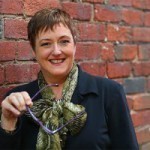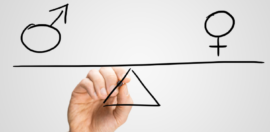One in Seven Living in Poverty - ACOSS Report
12 October 2014 at 11:25 am
Welfare peak body, the Australian Council of Social Service has released a new report revealing that poverty is growing in Australia with an estimated one in seven people living below the internationally accepted poverty line.
ACOSS says the report, Poverty in Australia 2014, found 2.5 million people or 13.9% of all Australians are living in poverty.
“The results provide the most up to date picture of poverty in the nation drawing on new data released by the Australian Bureau of Statistics Income and Expenditure surveys for 2011-12 and previous years,” ACOSS CEO Dr Cassandra Goldie said.
The report also found that 603,000 or 17.7% of all children are living in poverty in Australia.
ACOSS launched the report in Sydney with representatives of welfare Not for Profits,St Vincent De Paul and the Salvation Army who called on Government to work with community to reconfigure the budget and invest more in people with the least.
"This is deeply disturbing and highlights the need for a national plan to tackle the scourge of poverty which diminishes us all in one of the wealthiest countries in the world," Dr Goldie said.
"In particular, the child poverty rate should be of deep concern to us all, with over a third (36.8%) of children in sole parent families living in poverty. This is due to the lower levels of employment among sole parent households, especially those with very young children, and the low level of social security payments for these families.
"Most of the poverty we found is concentrated among the groups of people facing the most disadvantage and barriers to fully participating in our community. Those most likely to be in poverty are people who are unemployed (61.2%) and those in a household that relies on social security as its main source of income (40.1%), particularly on the Newstart Allowance (55.1%) or Youth Allowance (50.6%).
"This finding brings into focus the sheer inadequacy of these allowance payments which fall well below the poverty line. The poverty line for a single adult is $400 per week yet the maximum rate of payment for a single person on Newstart – when Rent Assistance and other supplementary payments is added – is only $303 per week. This is $97 per week below the 50% of median income poverty line.
"It also emphasises the danger posed by Budget proposals to reduce the indexation of pension payments to the Consumer Price Index only, which is likely to result in higher poverty rates over time than would be the case if payments were indexed to wages and therefore community living standards.
However Social Services Minister, Kevin Andrews, has denied that the budget cuts are putting more people at risk of living in poverty.
Andrews told ABC Radio that his Department would look at the ACOSS report.
However he said “what the budget is about is ensuring that we first have an adequate safety net but secondly to do so in the context of which the whole economy is thriving, and the reality is that if the economy is doing well then more Australians are doing well then that of course reduces poverty”.
The report comes on the heels of a University study which revealed that low-income families in Western Sydney and Melbourne's northern suburbs will suffer the most under new Federal Government budget measures.
In dollar terms low-to-middle income families could be worse off by more than $3,500 a year, the National Centre for Social and Economic Modelling (NATSEM) study at Canberra University found.
And while low income families with children could lose more than 6.5 per cent of their disposable income.
The NATSEM report said low income couples with children families lose an average of $2,780 compared to the high income family who will be ahead by an average of $478 per annum. Single parent families lose between $3,282 and $3,824 for all except the highest income category (of which there are virtually no such single parent families).
The study modelled 19 separate budget measures and also included some additional elements outside the Coalition's 2014-2015 budget.
ACOSS said its report also led to concerns about the higher level of poverty among people born in countries where the main language is not English (18.8%), which is much higher than those born overseas in an English speaking country (11.4%), or in Australia (11.6%).
"All available evidence on Aboriginal and Torres Strait Islander people continues to show these groups are at a significantly higher risk,” Dr Goldie said.
"Being unemployed is the strongest predictor of poverty. However, a significant finding of the report is the number of people living in poverty whose main source of income is from employment. Although workers in paid employment face a lower risk of poverty, they form one third (33.2%) of all people below the 50% poverty line. It is likely that most of these are either employed part time or supporting dependent children on a low wage.
"These overall findings are a wakeup call for us as a community and shine a spotlight on the current policy direction of Federal Government. It provides an opportunity for the government to work with the whole community to reconfigure its first Budget and national policy priorities around the urgent need to address poverty in Australia.
"We need the development of a comprehensive national plan to tackle poverty if we are going to build on our great wealth and more fairly share the opportunities that will include all our citizens," Dr Goldie said.
Summary of key findings
Poverty line (50% of median income) – for a single adult was $400 per week, for a couple with 2 children it was $841 per week;
Poverty rate – 2,548,496 people (13.9% of all people) living below the poverty line, after taking account of their housing costs;
Child poverty – 602,604 children (17.7% of all children) living below the poverty line;
Income support – 40.1% of people on social security payments living below the poverty line. Includes 55.1% of those on Newstart Allowance, 50.6% on Youth Allowance; 47.2% on Parenting Payment, 48% on Disability Support Pension, 24.8% on Carer Payment, and 15.7% of those on Age Pension;
Unemployed – 61.2% of people who are unemployed were living below the poverty line;
Working poor – 33.2% of people below the poverty line came from a household with wages as their main income;
Overall growth in poverty – Poverty increased between 2010 and 2012 by nearly one per cent (from 13% to 13.9).
Location – 13.8% poverty in capital cities compared to 14% outside capital cities;
Tasmania – 15.1% (Hobart 13.8%, rest of state 16%)
Queensland – 14.8% (Brisbane 13.9%, rest of state 15.4%)
NSW – 14.6% (Sydney 15%, rest of state 13.8%)
Victoria – 13.9% (Melbourne 13.7%, rest of state 14.3%)
WA – 12.4% (Perth 12.4%, rest of state 12.4%)
SA – 11.7% (Adelaide 11.5%, rest of state 12.5%)
ACT and NT – 9.1% (No separate data available due to small sample sizes in ABS survey).
Most at risk groups
Women – significantly more likely to experience poverty than men (14.7% compared to 13%);
Children and older people – face higher risks of poverty compared to other age groups (17.7% and 14.8% respectively);
Sole parents – at high risk with 33% in poverty in 2012 and 36.8% of all children in poverty were in sole parent households;
Born overseas – Poverty is higher amongst adults born in countries where the main language is not English (18.8%) than amongst those born overseas in an English speaking country (11.4%), or in Australia (11.6%);
Aboriginal and Torres Strait Islander people – ABS data does not include information to accurately measure this poverty rate, however 2011 HILDA data found 19.3% of Aboriginal and Torres Strait Islander people living in poverty, compared to 12.4% of the total Australian population;
People with a disability – latest available data does not allow this poverty rate to be calculated, however our previous report found 27.4% of people with a disability were living in poverty in 2009-2010 compared to 12.8% for the total population.
The Poverty in Australia 2014 is the third report in ACOSS' poverty series and updates earlier reports with new data released by the Australian Bureau of Statistics Income and Expenditure surveys for 2011-12 and previous years.
It uses the internationally accepted poverty line, defined as 50 per cent of median household income, and adjusts for housing costs. The research was conducted for ACOSS by the Social Policy Research Centre at the University of New South Wales.







